Destination events are on the rise as clients seek to take everything from weddings to corporate retreats on the road. In order to meet the needs of this burgeoning market, it’s imperative for catering and event planners to ready themselves with best practices and inspiration to execute a fête from afar.
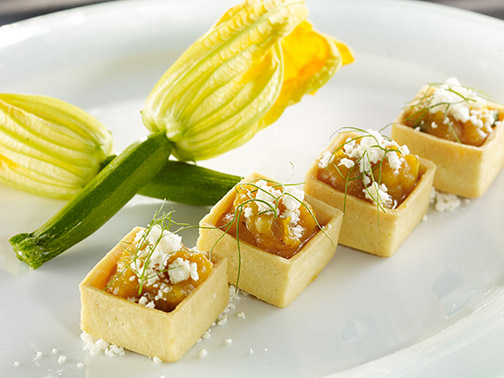
Butternut Squash Tart with Caramelized Onion, Fontina Cheese and Crispy Sage—perfect for any farm-to-table catering event. Garnish the plate with local blooms. Photo courtesy Wolfgang Puck
Creating a destination menu
Research is the essential first step to crafting an ideal menu that captures the region’s cuisine. Be sure to understand what flavors best represent the destination, as well as what ingredients can be sourced locally. This not only assists you with bringing your client’s culinary vision to life, but also carries savings on transportation and storage fees.
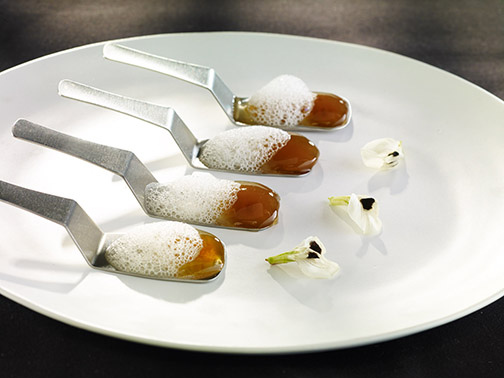
This “Edible Dark” with lime air on spoons is a play on the classic “Dark ‘N Stormy” rum cocktail, which is native to Bermuda. Photo courtesy Wolfgang Puck
“By selecting a destination, the client and their guests are looking for immersion,” says Stephanie Eden, Vice President of National Sales for Wolfgang Puck. “In addition to sourcing the best quality ingredients from local farmers, ranchers, and purveyors, we always look to highlight local flavors whether we are on the Eastern seaboard, in the heart of Texas, or foraging in the Pacific Northwest.”
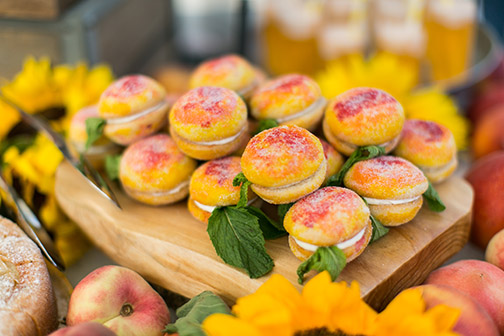
Peach Whoopie Pies bring together a fusion of Northeastern desserts with a Southern flavor. Photo courtesy Wolfgang Puck
While creating the menu, keep the overall design in mind to ensure a cohesive theme. “We love giving guests the vibe of the city, so we pair Moroccan cuisine like couscous and chicken tagine with over-the-top décor that really captures our culture,” shares Fabrice Orlando, CEO of Cocoon Events Group and long time event producer based in Marrakech. “From lanterns to fabrics, it all comes together for a very magical night.”
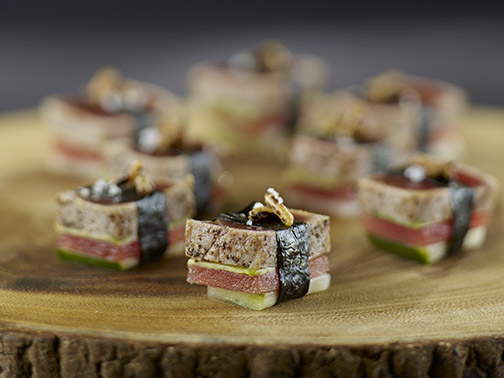
Seared Ahi Tuna on top of Compressed Watermelon with avocado, cucumber, and crispy rice make refreshing hors d’oeuvres for warm Hawaiian affairs. Photo courtesy Wolfgang Puck
If sticking to a strictly local menu makes your client somewhat wary, consider opting for fusion dishes, which add regional flavor without overwhelming the palate. Another option is to pair a traditional entree with hors d’oeuvres or desserts that are native to the destination.
Building a beverage list
A menu that pays homage to the locale can be extended to the bar as well. While margaritas are standard in Mexico, spiced iced tea with dark rum is a crowd pleaser in Jamaica. Tap into the nearby bar scene to get an idea of what the locals are sipping.
“Most destinations have their own drink of choice, so be sure to know what’s popular in the area,” explains Rebecca Hochreiter, Vice President of Marketing & Customer Engagement at Destination Weddings Travel Group. “Of course you’d want to source tequila for a Mexican event while rum would be more apropos for a Jamaican celebration.”
Sourcing professionals
While much emphasis may be placed on an inventive menu that incorporates regional fare, successful execution of the event itself will rely on assembling the right team.
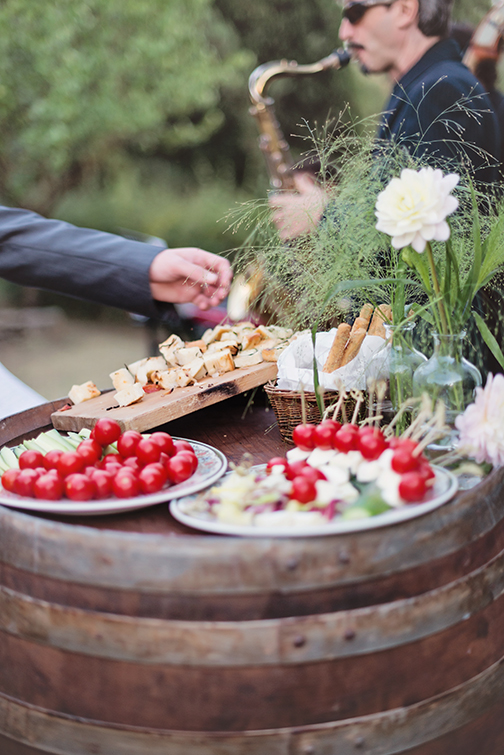
Bringing in locally sourced ingredients, like fresh tomatoes and cheese in Tuscany, is a great way to both save money and wow guests. Photo: Rochelle Cheever Photography
Despite your experience, chances are you’ll be operating outside of your home base in part, so it’s imperative to identify seasoned professionals on the ground who can speak (even the language) to the intricacies of the region. For caterers, that means seeking venues with a solid reputation and a planner who can manage the details on site. Planners will need to identify caterers well versed in local ingredients with a proven track record in destination specific events.
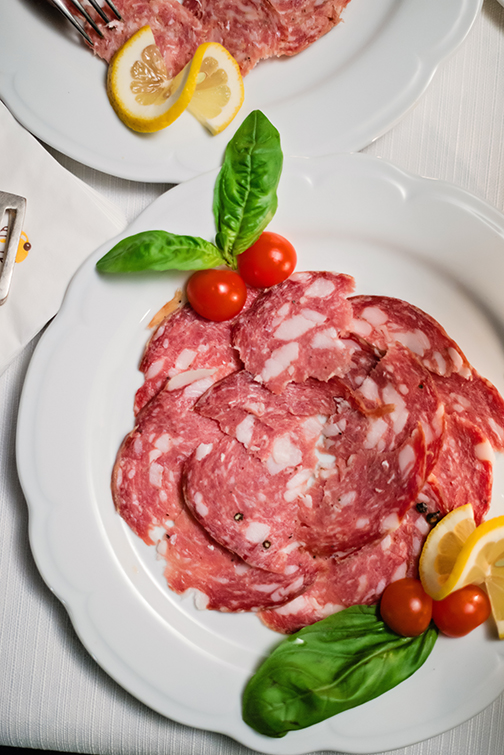
An elegant, delicious salami platter is perfect for any Italian-style wedding. Photo: Rochelle Cheever Photography
With events close-to-home, you’ll find that your own company philosophies may come into play.
“We look for caterers that already have an extensive staff versus those who have to piece together freelancers,” explains Orlando. “We like to go with the flow of the guests rather than force them to adapt to our plan, so it’s important for our caterers to be flexible and embrace that philosophy.”
Common challenges
Working with a variety of personalities can be a trial, but it’s especially significant when collaborating from a distance. This goes back to the importance of qualifying all professionals involved before joining an event team. “I’ve found that setting a monthly appointment to touch base helps to keep things moving,” asserts Jennifer Taylor, owner of Taylor’d Events Group. “We also use a cloud-based software that helps tremendously with organizing and sharing information.”

Local desserts are a popular choice as sweets of just about any ilk are a global favorite! Photo: Rochelle Cheever Photography
Another difficulty can come when working with a location you haven’t seen. If you’re unfamiliar with area resources, lean on the venue for additional guidance. “It is important to build suggestions that can then be tailored when it becomes appropriate to visit the location and evolve the menu and offerings,” adds Eden.
Smaller bites and hors d’oeuvres are a great place to incorporate regional cuisine, like these Mediterranean olives and chips. Photo: Rochelle Cheever Photography
Destination events open the door to a wealth of culinary options while also allowing you to flex your creative muscle that much more. While there are a number of additional logistics to consider, with the above insight, rest assured the outcome will be both successful and memorable.



